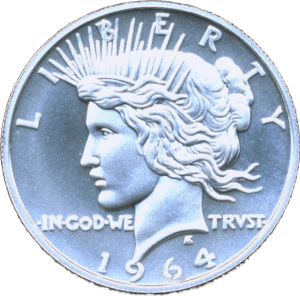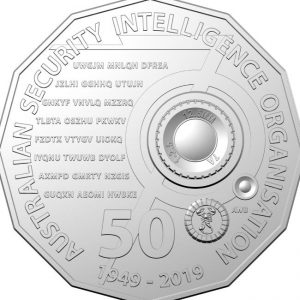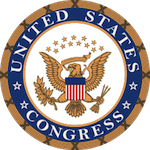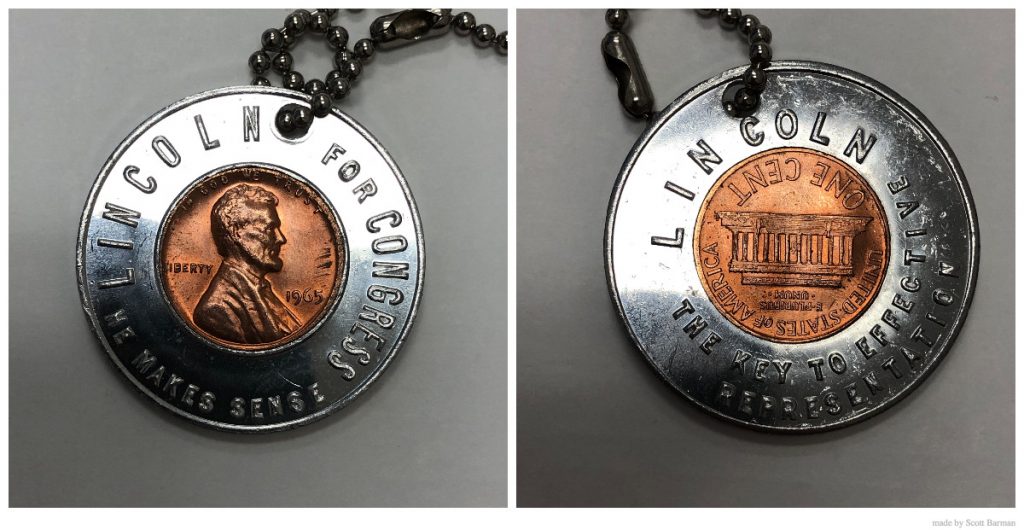TEN THOUSAND!
 Earlier this month, the Coin Collectors Blog passed 10,000 email subscribers. More than 10,000 people receive an email notification every time I publish an article. It is amazing!
Earlier this month, the Coin Collectors Blog passed 10,000 email subscribers. More than 10,000 people receive an email notification every time I publish an article. It is amazing!
I started this blog with a post on October 31, 2005. When I published the post, I did not know how long I would write about collecting, the market, my thoughts on the hobby, and anything else that came to mind. I did not think that I would still be doing this more than 16 years later.
The Coin Collectors Blog is a labor of love, and I enjoy the hobby so much that I want to share it with everyone. I seek out stories in the non-numismatic media to share with people on Twitter and collect news releases to publish on the Coin Collectors News site to give collectors a place to find the latest news.
Whether you are new to the blog or have been with me for many years, THANK YOU! Thank you for joining me on my numismatic adventures.
Weekly World Numismatic News for December 15, 2019 +2

“Coincryption” from the Royal Australian Mint (Image via news.com.au)
The coin, called “Coincryption,” was issued in honor of the 70th anniversary of the Australian Security Intelligence Organisation (ASIO). The ASIO is equivalent to the Federal Bureau of Investigation in the United States.
As part of the contest, the person who cracked the code was eligible to receive a one-of-a-kind coin designed to celebrate the anniversary of the ASIO.
To crack the code, you need to use the one-time pad as a key. A one-time pad (OTP) is randomly generated text that, when you apply a specific formula, will reveal each letter. OTPs can be very secure if used only once, and the equation to decode the message is frequently changed.
For this contest, the Royal Australian Mint published the OTP in the literature sold with the coin (for AU$10) or online. Since the contest is over, the Royal Australian Mint removed the OTP from their website.
UPDATE: I found the OTP on the Royal Mint’s website → here.
According to the press report, the decoded message says:
If you want an encryption challenge, you can try your skills at Kryptos, the copper sculpture that is outside of the Central Intelligence Agency’s headquarters in Langley, Virginia.
Kryptos contains four messages in the 865 characters carved into the sculpture. Since its installation in 1990, world-wide experts have solved three of the four messages. The last 97 characters, known as K4, remain unsolved.
Since Kryptos is on the CIA grounds, it is off-limits to the public. However, the CIA has made it available on their website. More information about Kryptos, including the messages hidden in the first three panels, is available in this article.
Kryptos might be a good idea for a commemorative coin. Create a clad coin with K4, attach it to a card with information about the sculpture that includes the cipher, and offer a special gold coin to whoever solved the puzzle. Add a $5 surcharge and donate the money to STEM education.
And now the news…
 → Read more at scotsman.com
→ Read more at scotsman.com
 → Read more at 9news.com.au
→ Read more at 9news.com.au
 → Read more at themayor.eu
→ Read more at themayor.eu
 → Read more at news.sky.com
→ Read more at news.sky.com
 → Read more at news.com.au
→ Read more at news.com.au
 → Read more at bbc.co.uk
→ Read more at bbc.co.uk
 → Read more at economictimes.com
→ Read more at economictimes.com
Weekly World Numismatic News for December 8, 2019
After a week of being busier than a one-armed paper hanger, I sat down to write a blog post and found that this was marked as a draft and never published. Sorry for the delay!

The Brits love collecting these coins that would be called “gimmicks” in the United States
(Royal Mint image)
The study that was commissioned by the Royal Mint sampled 2,000 adults and showed that more than 50-percent of the respondents collected coins or stamps, the most in the survey.
Although age was a factor in the type and size of the collection, the study showed that themed coins were more popular with younger collectors than the traditional set building.
When it comes to advancement in electronic payments, e-commerce, and similar conveniences, the UK is no different than the United States. One Bank of England study showed that younger adults are adapting to credit cards and electronic payment options more than their parents and grandparents. The difference is that the average value of the transactions is higher.
In addition to the 1-, 2-, 5-, 10-, 20-, and 50-pence coins, the Royal Mint produces £1 and £2 circulating coins. Brittons are used to carrying these coins and using them for low-value transactions. While many stores will accept micro-transactions using credit cards, the cost structures are different that using coins is encouraged.
In the United States, the credit card companies have pushed the use of cards to the point of lowering transaction fees to the merchants to encourage microtransactions. While it is common to see someone in the United States pay for a $2 large soda with a credit card, the studies show that this does not happen as much in the United Kingdom.
Aside from the societal norms that continue to promote coins for commerce, the Royal Mint has done an excellent job promoting coin collecting by producing different designs. They produced 20p and 50p circulating coins that have promoted various aspects of British cultural history. It is common to see weekly stories of a limited edition circulating coins to sell for high values in online auctions.
Not only are these coins accepted by the British numismatic community, but they are also used to promote the hobby more than the sovereigns of the higher-priced collectibles. News reports demonstrate that the British collecting public would instead collect coins about Wallace & Gromit or Paddington Bear than a sovereign.
Rather than embrace change in United States coinage, the numismatic Illuminati would rather bemoan the state of “modern coinage.” They forgot how the 50 States Quarters Program brought back interest in collecting coins. But they were happy when people started showing up at their shops and shows while ignoring the hucksters out there who were selling overpriced packages which has lead to giving the hobby a proverbial black eye.
The situation is understandable. Dealers have to make a living, and it is more profitable to sell Morgan Dollars than it is to sell Presidential Dollars. Unfortunately, the way dealers turn their noses up to the lower-end market is turning away future customers. Collectors have to start somewhere and if it means getting someone interested in collecting National Parks Quarters or encouraging a series of quarters based on cultural icons, then embrace the change. Your future may depend on it!
And now the news…
 → Read more at mirror.co.uk
→ Read more at mirror.co.uk
 → Read more at hurriyetdailynews.com
→ Read more at hurriyetdailynews.com
 → Read more at mining.com
→ Read more at mining.com
 → Read more at bbc.com
→ Read more at bbc.com
 → Read more at qz.com
→ Read more at qz.com
 → Read more at princegeorgematters.com
→ Read more at princegeorgematters.com
November 2019 Numismatic Legislation
 Rather than celebrate the centennial of Women’s Suffrage on a $20 note, congress passed the Women’s Suffrage Centennial Commemorative Coin Act (H.R. 2423, Public Law No. 116-71).
Rather than celebrate the centennial of Women’s Suffrage on a $20 note, congress passed the Women’s Suffrage Centennial Commemorative Coin Act (H.R. 2423, Public Law No. 116-71).
In 2020, the U.S. Mint will strike no more than 400,000 silver dollars with a design that is “emblematic of the women who played a vital role in rallying support for the 19th Amendment to the Constitution of the United States.”
Each coin will include a $10 surcharge that will go to the Smithsonian Institution’s American Women’s History Initiative.
H.R. 2423: Women’s Suffrage Centennial Commemorative Coin Act
Currently sitting in limbo is the National Law Enforcement Museum Commemorative Coin Act (H.R. 1865). After the bill passed the House, it was sent to the Senate who made a technical change. By law, the bill is sent to a conference committee that irons out the differences. Once completed, the bill is sent back to both chambers for an up-or-down vote.
The Senate passed the bill by Unanimous Consent. In the House of Representatives, it was a different matter. The passage of this bill was bundled with other legislation that was rejected by the House, mainly on procedural grounds. Because the resolution to pass the bill failed, it was tabled to be considered again at another time. At that time, the House Rules Committee can unbundle the bills and try again.
Now you know why Otto Von Bismark compared the making of laws to that of sausages!
H.R. 1865: National Law Enforcement Museum Commemorative Coin Act
Finally, there was one bill added to the virtual hopper by Senate Minority Leader Chuck Schumer.
S. 2815: National Purple Heart Honor Mission Commemorative Coin Act
Weekly World Numismatic News for December 1, 2019 (Day Late)
Sorry for being late. It’s the holiday season and those of us in retail are busy!
‘Tis the season… for scams!

Ericsson DBH 1001 (ca. 1931), the first combined telephone made with a Bakelite housing and handset.
According to the AARP Fraud Watch Network, the people perpetrating the scams are skilled in the psychological warfare necessary to get the intended victim to believe them. Most target the elderly because they are the ones with psychological issues that come from aging, such as reduced functionalities, loss of loved ones, and a changing culture that they do not understand.
Although gold and silver scams are not new, scammers are using the confusing language of new laws that allows these criminals to hide behind the mumbo-jumbo of words.
Unfortunately, these slick-talking salespeople are good at what they do. The result is separating their mark from their money, leaving the victim broke.
The best suggestion to deal with this type of fraud is not to buy anything over the telephone from someone you do not know. It does not matter how professional they sound or good they make you feel. These people are not looking out for your best interest.
Also, do not fall for the “we will hold your gold or silver in our vaults and give you a receipt” scam. While there are legitimate companies that will offer this service, for a fee, others are not licensed or insured to keep your assets secure. If you fall for this scam, they will run away with your money while you hold onto a worthless piece of paper.
Unless you initiate the call to a verified telephone number, do not give out any personal information to the person on the other end of the line. Even if the person claims to be from a charity, you will not be able to verify whether their story is true or not. Just hang up and go on with your life. You will be happier that you did!
RECOMMENDATION: If you want to learn more about how scams occur and how to protect yourself and your loved ones from them, you will want to listen to The Perfect Scam, a podcast from AARP. Although I have heard about many of these scams, the podcast puts them into a broader context by discussing how widespread it is. If there is a vulnerable person in your life, you should listen to this podcast to learn about the signals that they may be in trouble from a scammer. You can listen to it on your favorite podcast app or visit the podcast’s homepage.
And now the news…
 → Read more at express.co.uk
→ Read more at express.co.uk
 → Read more at hellomonaco.com
→ Read more at hellomonaco.com
 → Read more at independent.co.uk
→ Read more at independent.co.uk
 → Read more at israelnationalnews.com
→ Read more at israelnationalnews.com
 → Read more at twocents.lifehacker.com
→ Read more at twocents.lifehacker.com
Would You Encase a Lincoln or an Almond
Two weeks ago, my crew and I emptied a 20×10 storage room. The co-owner was a picker and a dealer who had been buying and selling for many years. I met his former partner at the storage facility with a large rental truck to move everything to my warehouse.
Before leaving the storage facility, boxes filled the entire truck about two-thirds of the way high. It is our largest consignment.
In those boxes are political memorabilia, Star Trek collectibles, collectible plates, antique photos, newspapers, other memorabilia, posters, and so much more. We are creating an inventory so that they can be sold at auction.
Amongst the campaign material for many different candidates, both winners and losers, we found medals and other numismatic-related items associated with candidates.
We found a few inaugural medals, which I expected, but I also found many other numismatic-related items that I want to share.
The item of today is an encased 1965 Lincoln Cent with a chain through a hole to make it into a key ring. On the obverse of the aluminum ring, it reads, “Lincoln for Congress / He Makes Sense.” On the reverse, the ring says, “Lincoln / The Key To Effective Representation.”
I found hundreds of these coins in plastic bags! All were the same, including the uncirculated 1965 Lincoln Cent.
Who was this person and did he or she win their election?
After searching records from congressional elections from 1966-1976, the only Lincoln that ran for congress is Lincoln Almond. Almond, a Republican from Rhode Island, ran for Rhode Island’s First District seat against the incumbent Fernand St. Germain in 1968. St. Germain won the election with 60.4% of the vote.
Almond later was appointed by Nixon and Ford to be the U.S. Attorney for the District of Rhode Island (1969-78) then again by Reagan and Bush (1981-1993). Almond ran for governor of Rhode Island in 1978 but lost in the primaries. He was more successful when he was elected governor in 1994.
As I type this, I began to think that basing a campaign on his first name was a good idea. Otherwise, that would be nuts! (insert rim-shot here)

